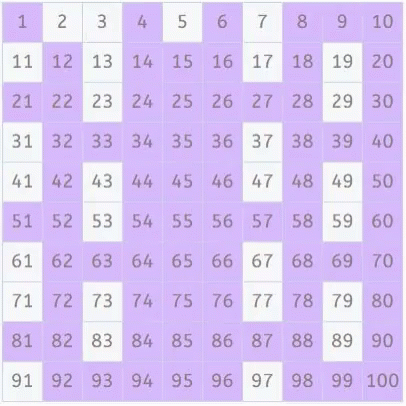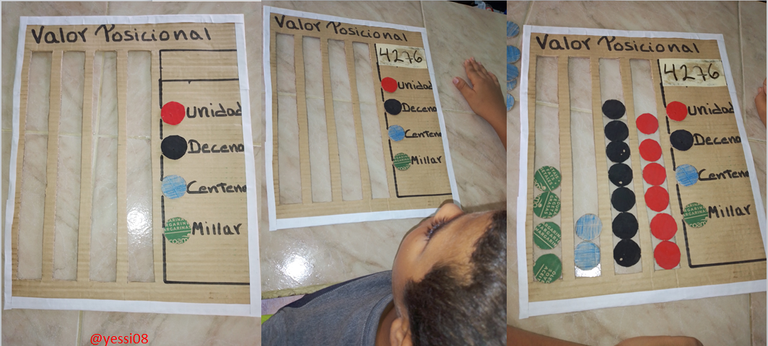
Feliz tarde padres y madres que hacen vida en esta hermosa comunidad, es grato para mi, estar nuevamente con ustedes compartiendo contenido educativo, para el refuerzo de la educación en casa!
En nuestro país Venezuela estamos próximo a iniciar el nuevo año escolar, y, hay contenidos que debemos reforzar a nuestros hijos, en mi caso, mi hijo menor cursara el quinto grado de educación básica, y, como docente de matematicas, siempre me preocupo por la enseñanza de dicha asignatura, porque he podido observar a lo largo de mi carrera, las deficiencias en los contenidos básicos matemáticos; por ello, he diseñado un recurso que he denominado: "tabla de valor posicional", con el objetivo de estudiar la posición de numeros al momento de ordenar operaciones, siguiendo el orden de unidad, decena, centena y millar!!
Este recurso ofrece múltiples beneficios a nuestros pequeños, tales como:
lectura de cantidades pequeñas y grandes
diferencian un dígito de un número
comprender el valor de un número por su posición
ubica unidad, decena, centena, y millar.
ordena operaciones básicas de forma correcta.
Además es un recurso muy fácil de elaborar, y se puede volver a utilizar una y otra vez!
Happy afternoon fathers and mothers who make life in this beautiful community, it is a pleasure for me to be with you again sharing educational content for the reinforcement of education at home!
In our country Venezuela we are about to start the new school year, and there are contents that we must reinforce our children, in my case, my youngest son will attend the fifth grade of basic education, and as a math teacher, I always worry about the teaching of this subject, because I have observed throughout my career, the deficiencies in the basic mathematical content; therefore, I have designed a resource that I have called: "place value table", with the aim of studying the position of numbers when ordering operations, following the order of unit, ten, hundred and thousand! !
This resource offers multiple benefits to our little ones, such as:
reading small and large quantities
differentiate a digit from a number
understanding the value of a number by its position
locate unit, ten, hundred, and thousand.
order basic operations correctly.
It is also a very easy resource to work with, and can be reused over and over again!
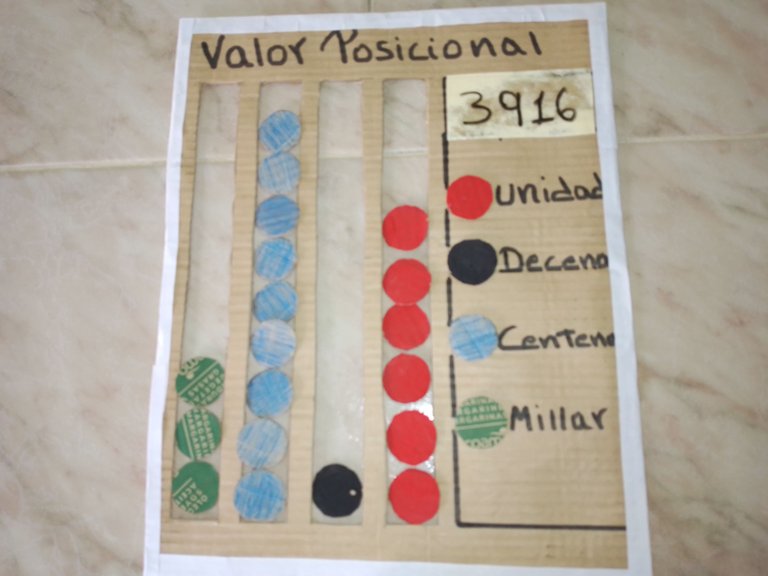

cartón
tijera
regla
pinturas de colores
carton
scissors
ruler
colored paints
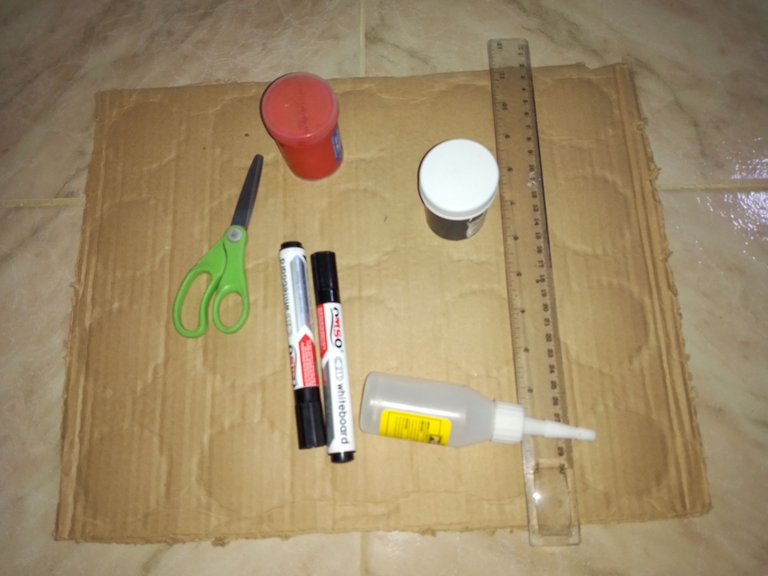

En un trozo de carton de aproximadamente 60cm x 40cm, recortamos 4 carriles, y, de un lado haremos una leyenda asignando un color diferente para la unidad, decena, centena y millar, y en la parte superior haremos una pizarra donde se escribirán las cantidades.
Recortamos 40 círculos del grosor de los carriles, y asignamos 4 colores diferentes, agrupandolos de 10 .
On a piece of cardboard of approximately 60cm x 40cm, we cut out 4 rails, and, on one side we will make a legend assigning a different color for the unit, ten, hundred and thousand, and on the top we will make a blackboard where the quantities will be written.
We cut out 40 circles of the thickness of the rails, and we assign 4 different colors, grouping them in groups of 10.
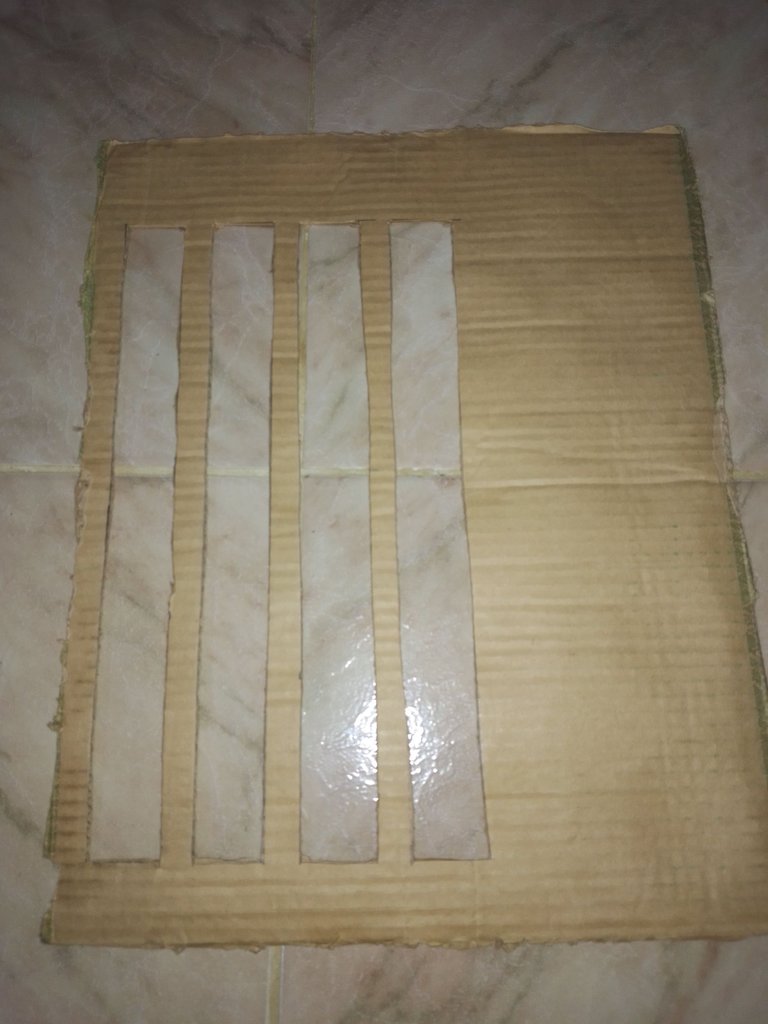
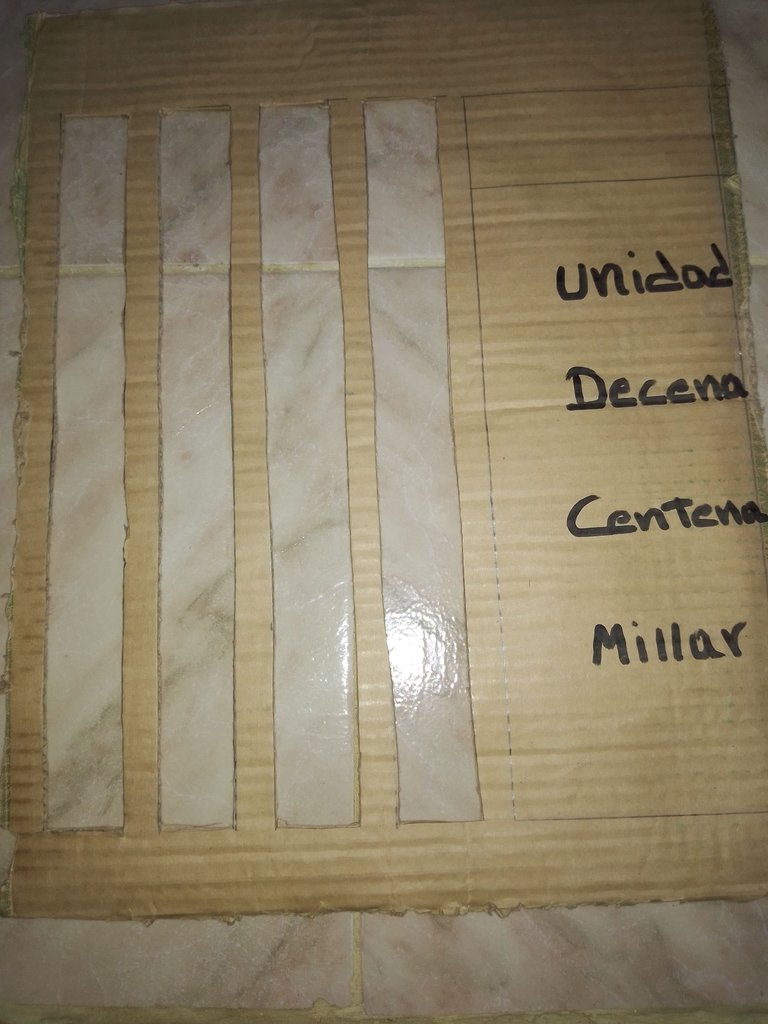
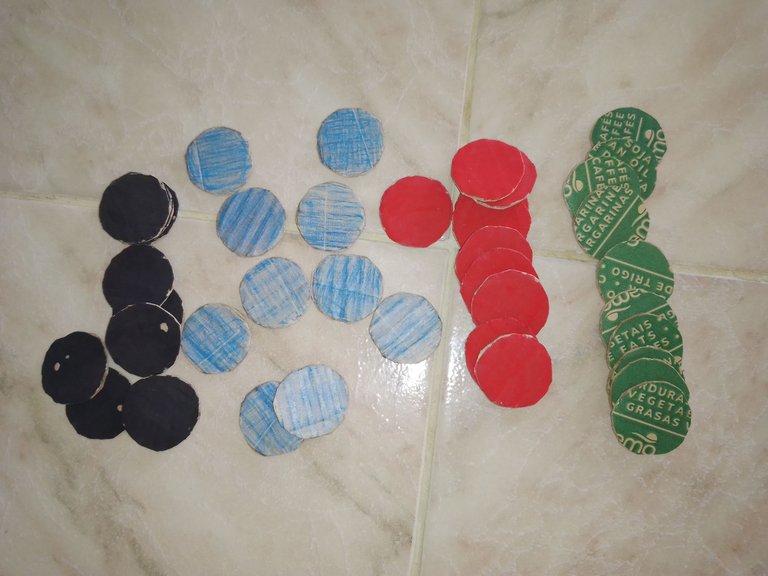
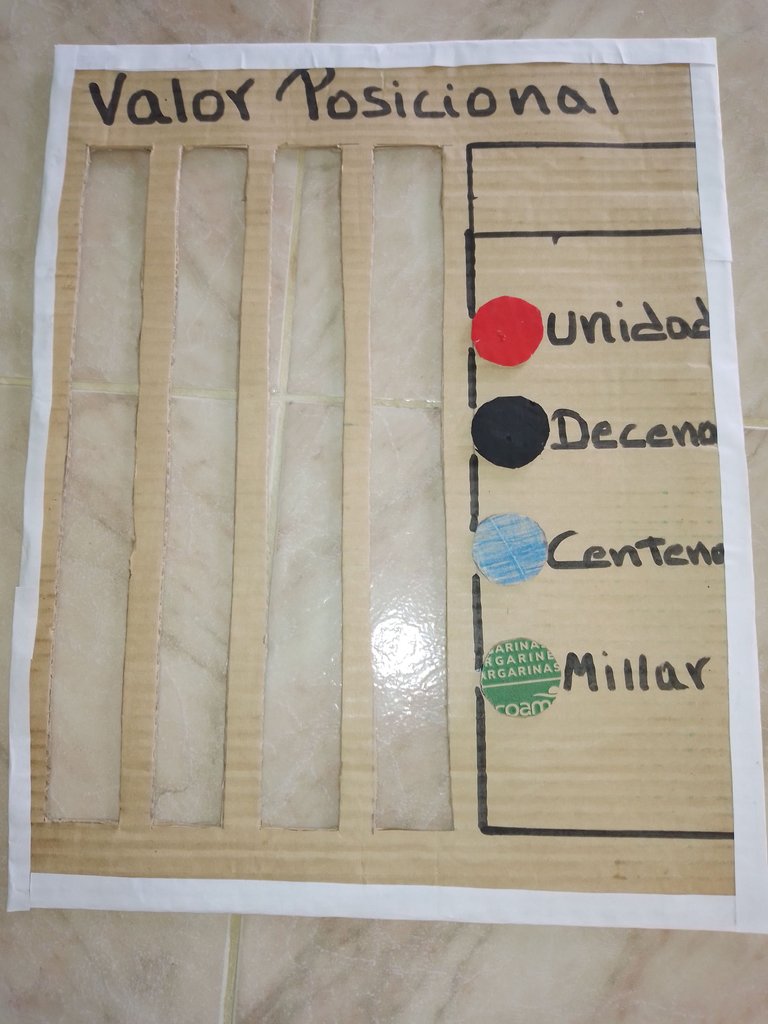
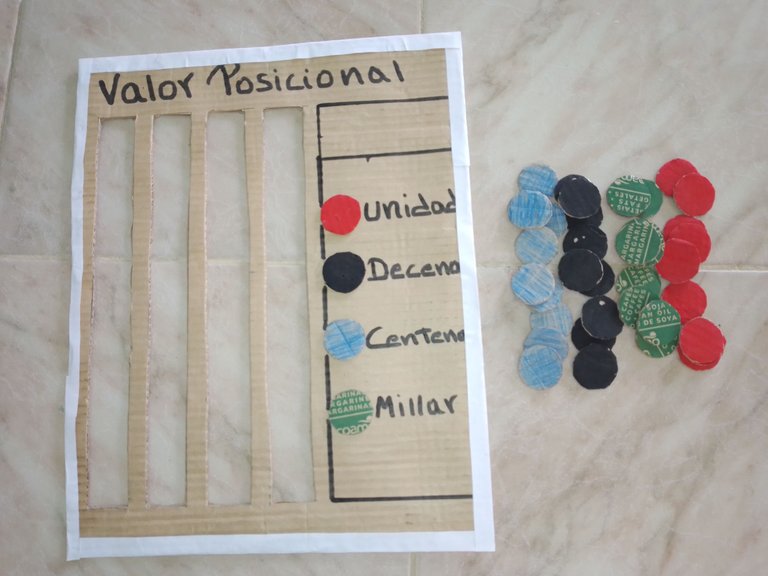

Dispuesto el tablero, se escribe una cantidad en la pizarra, y se le explica al niño, el valor de cada dígito según su posición; entonces deberá ubicar cada uno en su carril correspondiente de izquierda a derecha, y de millar a unidad, colocando la cantidad de fichas en su color correspondiente.
En el primer ejemplo, escribi 4276; entonces el niño ubicara 4 círculos verdes en el primer carril de izquierda a derecha, que corresponde a millar.
Ubicara 2 círculos azules en el segundo carril, 7 círculos negros en el tercer carril, y, por último 6 círculos rojos en el cuarto carril que corresponde a la unidad.
Once the board is ready, a number is written on the blackboard, and the value of each digit is explained to the child according to its position; then the child must place each digit in its corresponding lane from left to right, and from thousand to unit, placing the number of chips in its corresponding color.
In the first example, I wrote 4276; then the child will place 4 green circles in the first lane from left to right, which corresponds to thousand.
He will place 2 blue circles in the second lane, 7 black circles in the third lane, and finally 6 red circles in the fourth lane corresponding to the unit.
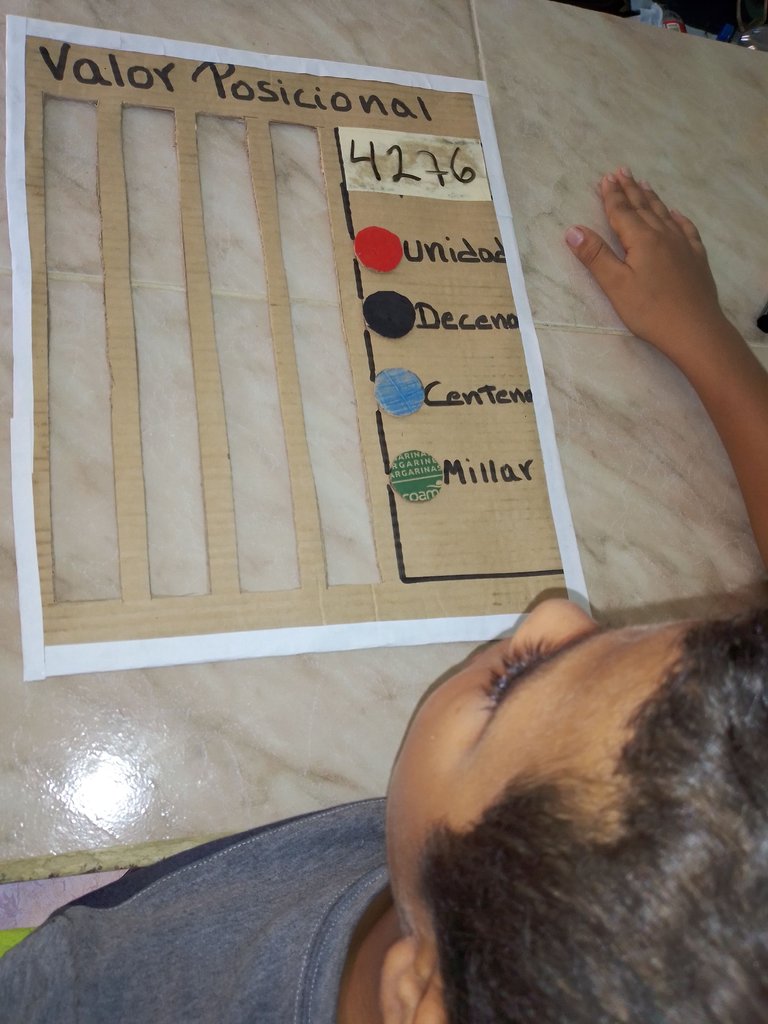
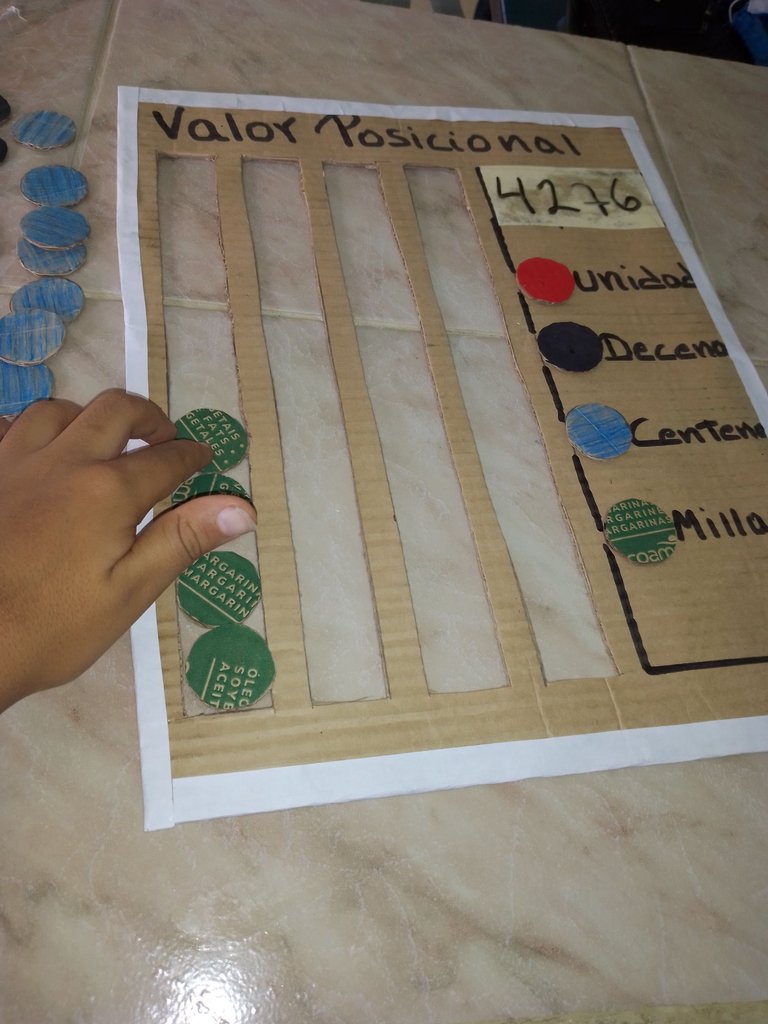
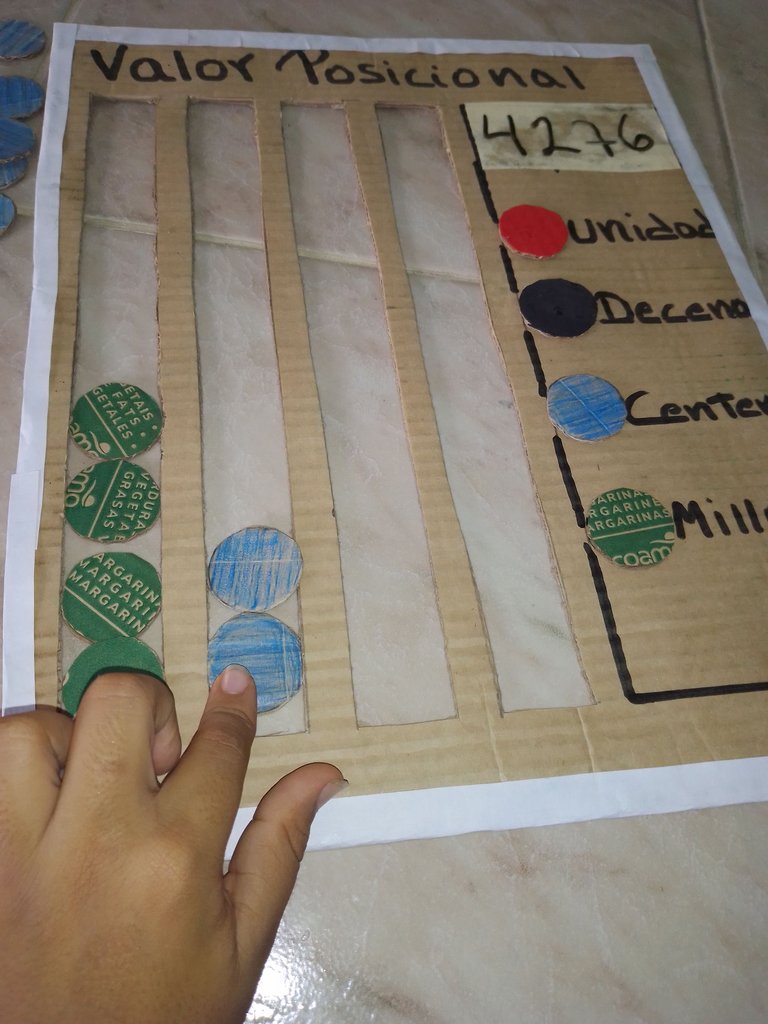
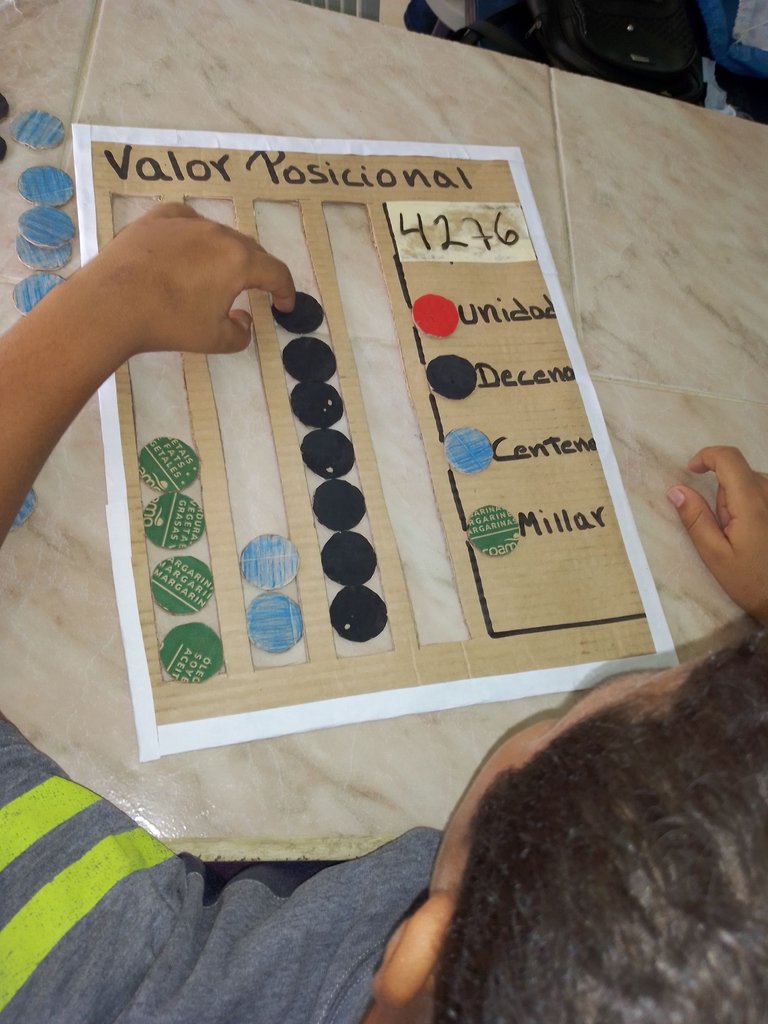
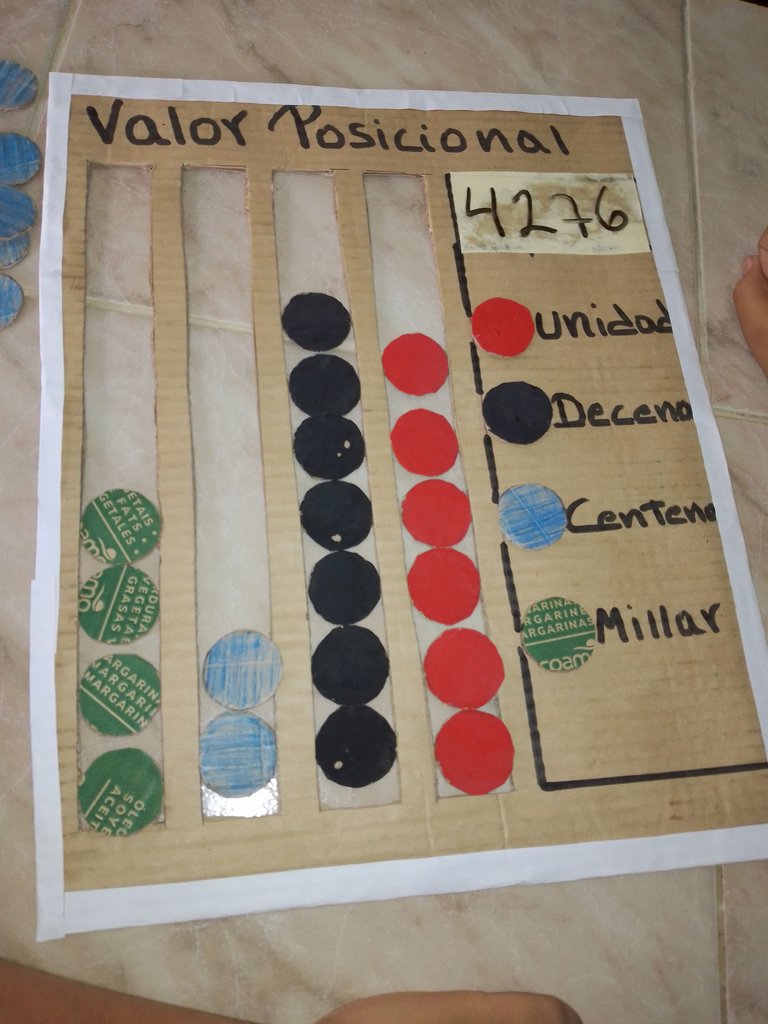

También se puede trabajar con números de 2 dígitos, donde el niño identificara que no utiliza el carril de millar, sino a partir de centena.
You can also work with 2-digit numbers, where the child will identify that he/she does not use the thousands track, but from the hundreds track.
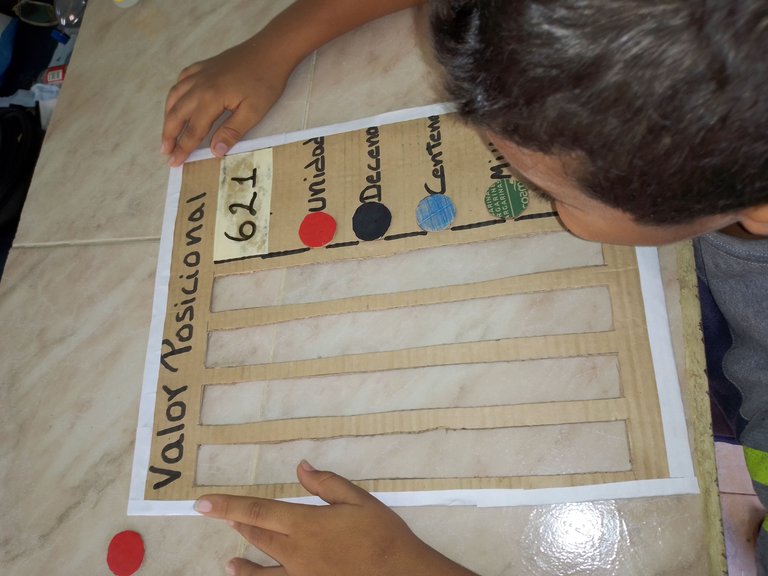
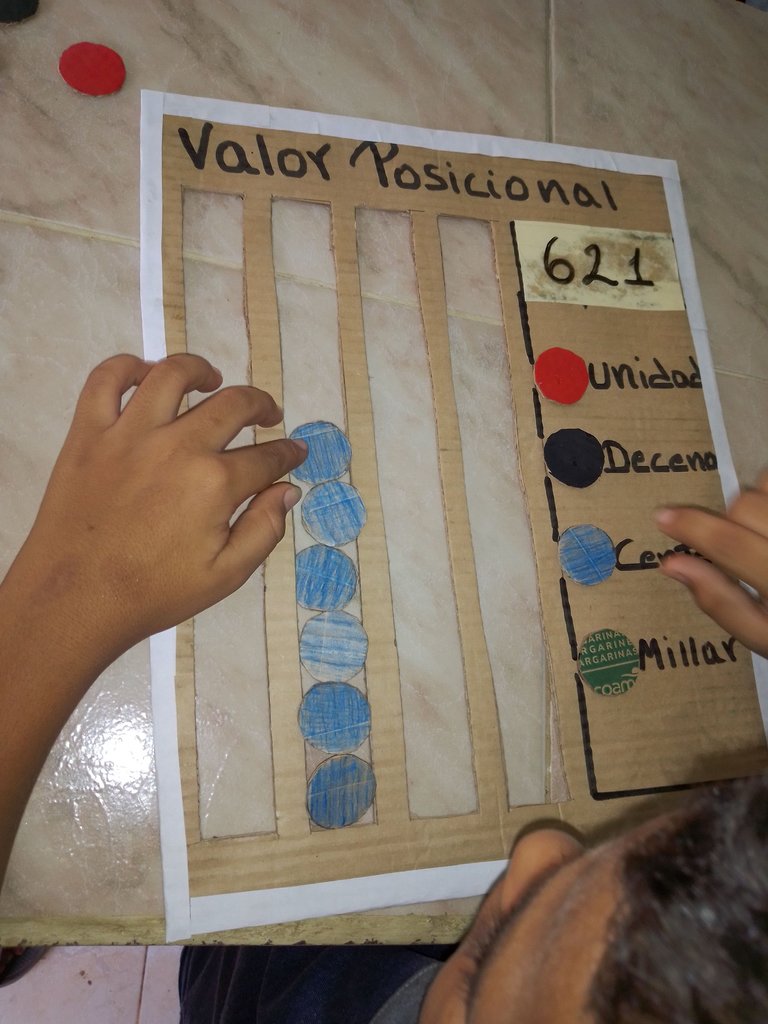
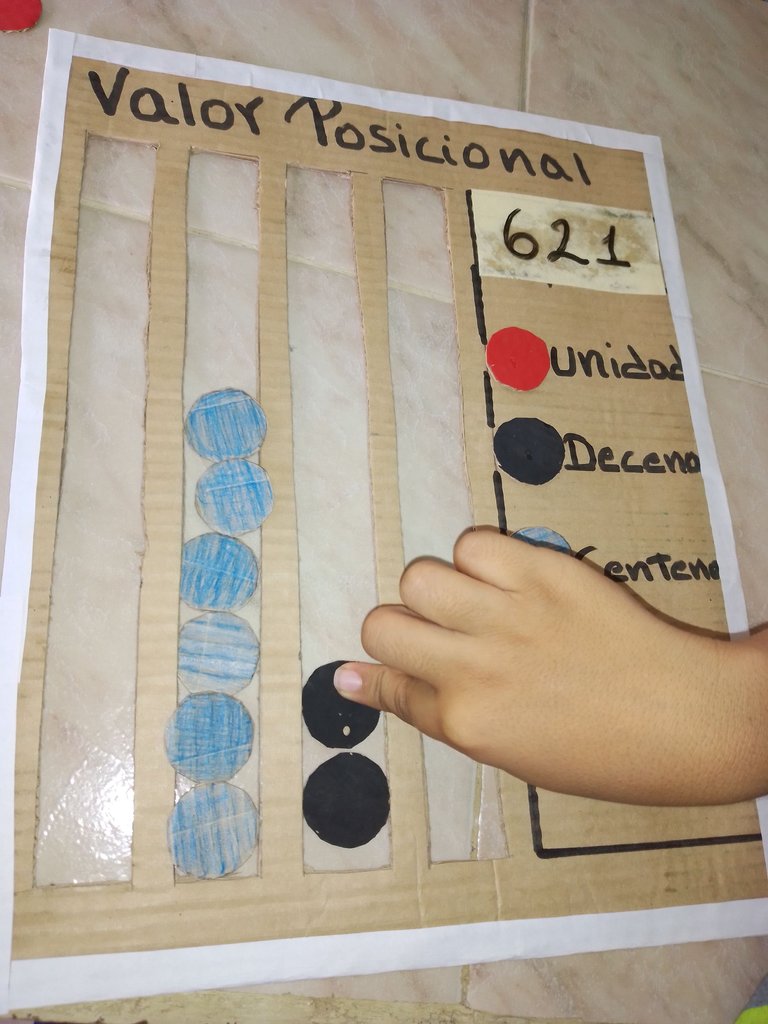
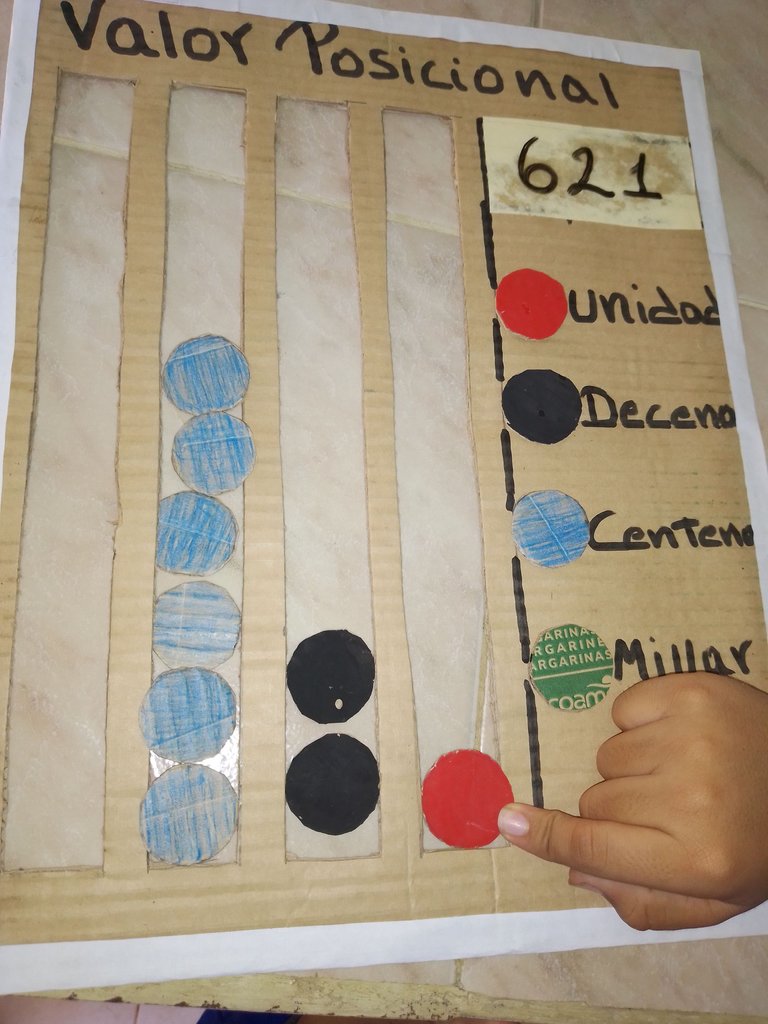

También se puede trabajar con 2 digitos, utilizando solo los carriles de centena y unidad!
You can also work with 2 digits, using only the hundred and unit lanes!
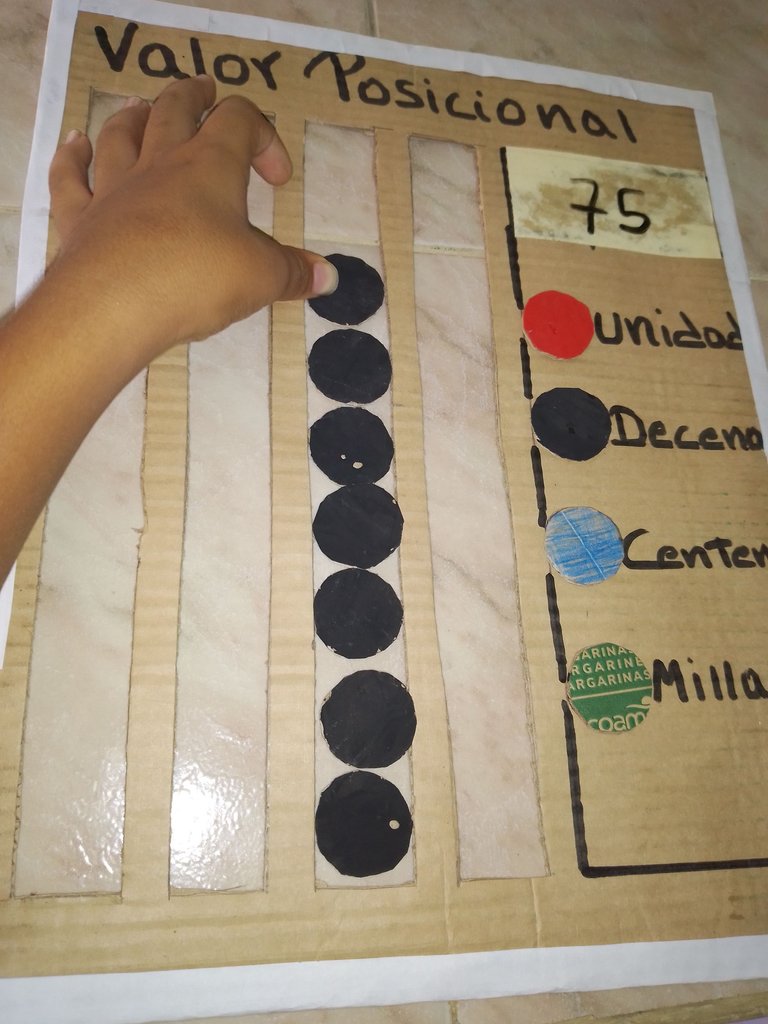
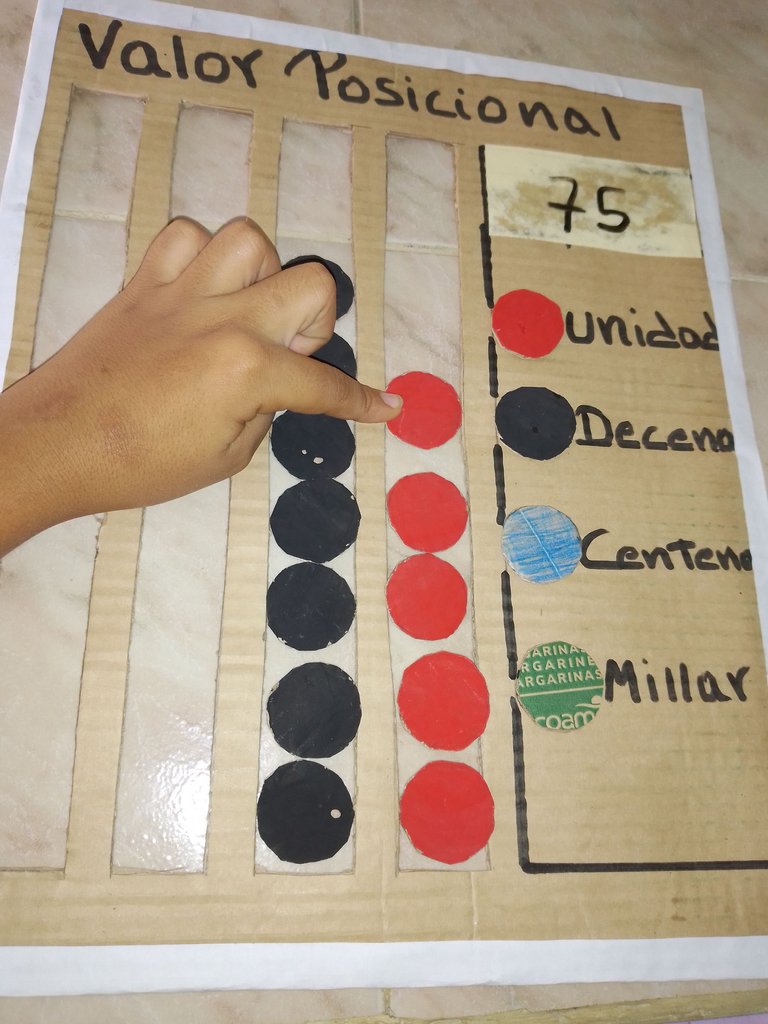

Espero la estrategia te sea de utilidad, gracias por pasar y comentar!
Dios te bendiga!
I hope you find the strategy useful, thanks for stopping by and commenting!
God bless you!
Translated with https://www.deepl.com/translator
Todas las imágenes son de mi autoría, capturadas con mi teléfono ZTE.
All images are my own, captured with my ZTE phone.
